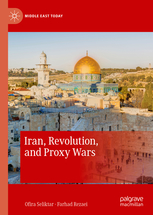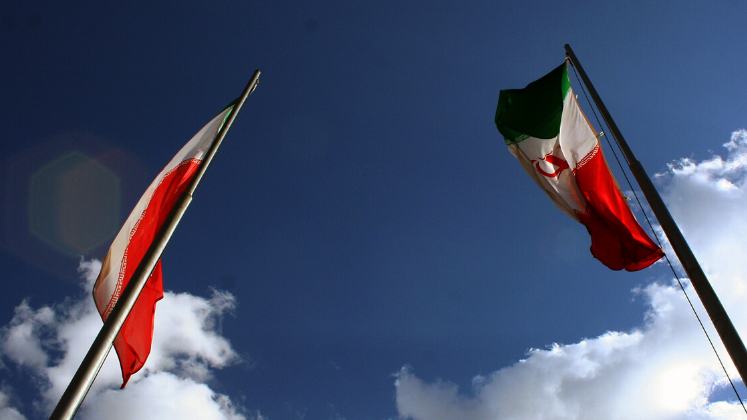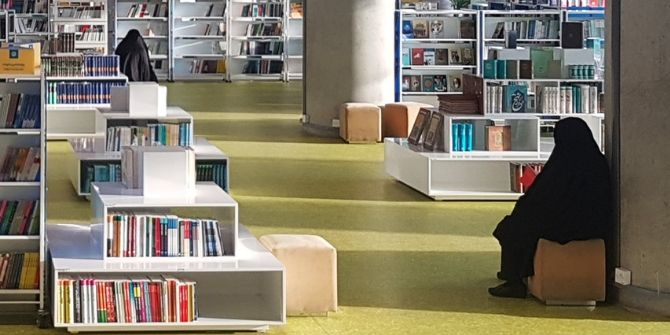In Iran, Revolution and Proxy Wars, Ofira Seliktar and Farhad Rezaei shed light on Iran’s proxy war tactics since 1979 to reflect on its regional aims and policies. This book should be on the shelf of anyone who studies Iran’s foreign policy and Middle Eastern politics, writes Cangul Altundas-Akcay.
Iran, Revolution and Proxy Wars. Ofira Seliktar and Farhad Rezaei. Palgrave. 2020.
 Since the Islamic Revolution of 1979, Iran, with a predominantly Shi’a population, has been one of the influential regional powers in the Middle East, with an aim to export its revolution and enhance its dominance. With the outbreak of the Arab Uprisings, it has further maintained its regional goals, endorsing some of the warring factions in the conflicts by supporting the Bashar Assad regime in Syria while backing the Houthis in Yemen. In their book Iran, Revolution, and Proxy Wars, Ofira Seliktar and Farhad Rezaei shed light on Iran’s asymmetrical war strategies and its proxy war tactics since the beginning of the revolution to reflect on its regional aims and policies.
Since the Islamic Revolution of 1979, Iran, with a predominantly Shi’a population, has been one of the influential regional powers in the Middle East, with an aim to export its revolution and enhance its dominance. With the outbreak of the Arab Uprisings, it has further maintained its regional goals, endorsing some of the warring factions in the conflicts by supporting the Bashar Assad regime in Syria while backing the Houthis in Yemen. In their book Iran, Revolution, and Proxy Wars, Ofira Seliktar and Farhad Rezaei shed light on Iran’s asymmetrical war strategies and its proxy war tactics since the beginning of the revolution to reflect on its regional aims and policies.
The book is structured as seven main chapters and a very short conclusion. In the first chapter, the authors examine how Iran started the pursuit of exporting its revolution, giving a broad background to its theological regime and the foundation of the Islamic Revolutionary Guard Corps (IRGC). In particular, they examine how Iran became both a national state and a revolution exporter from the outset of the revolution, and the effects of its anti-US and anti-Israel policies on its proxy wars. Giving information regarding the proxy system and the role of the IRGC, the authors provide ‘a detailed analysis of the way in which the goals of revolution export are melded with the imperative of regime defence and national interests’ (17) in the following chapters, unpacking different cases.
The second and third chapters touch on how and why Hezbollah and Hamas emerged as significant proxies of Iran in Lebanon and Palestine respectively, defining the asymmetrical warfare strategy of Iran in detail. Since anti-Zionism is one of the main motivations of Iran, it has pursued military collaboration with these groups in fighting with Israel. The fourth chapter mainly explains how the IRGC arguably engaged in opportunistic cooperation with Al-Qaeda in the mutual pursuit of destabilising the US in the Middle East and beyond from the 1990s to the beginning of the 2000s. In this chapter, the important point is that Iran’s alleged ties with Al-Qaeda were temporary and interest-based in contrast to its close alliance with Hezbollah. The chapter further points to the US perception of Al-Qaeda, and the failure of Iran’s aim in enhancing the revolution in Africa.

In the fifth chapter, the authors examine the US plans to topple the Saddam Hussein regime in Iraq and the role of Iran during that term. They point out that Iran viewed the toppling of the Saddam regime as ‘a gift from God’ even though it did not wish a US presence in the region (131). As such, the IRGC sought to increase its influence in tandem with the decrease of US influence in Iraq following the overthrow of the Saddam regime, using the Badr Brigade, which is an Iraqi Shi’ite Islamist political party and military organisation. The sixth chapter broadly describes the historical ties between Iran and Syria in order to figure out Iran’s proxy war in the recent Syrian conflict. Syria is crucial for the ‘axis of resistance architecture’, notably due to its close proximity to Hezbollah (167). This is because the presence of the Shi’ite population along strategic routes was vital to provide solidarity at the sectarian level (192-93). The chapter further points out the role and policies of the IRGC in Syria’s political system and the Iranian effort to keep Assad in power.
In the seventh chapter, the authors explain the conflict between the Iran-backed Houthis and the Saudi Arabia-supported Yemeni government in the post-Arab Uprisings era, giving an extensive background to their conflict. In particular, Iran’s naval strategy Anti-Access/Anti-Denial (A2/AD), described as a ‘family of military capabilities used to prevent or constrain the deployment of opposing forces into a given theatre of operations and reduce their freedom of manoeuvre once in a theater’ (221), is explained to understand Iran’s deterrence tactics in the Yemen War. The conclusion unpacks the pros and cons of Iran’s proxy strategy: for instance, ‘turning non-enemy civilians into a human shield to embed military assets’. The authors conclude that ‘there is no single explanation for the remarkable success of the proxy projects. Rather it is a combination of several IRGC winning strategies’ (235). The authors also analyse the impact of US sanctions against Iran on Iran’s proxy wars, assuming that ‘only an extremely high cost of doing business in the form of economically devastating sanctions may persuade the regime to adopt a more conventional state-oriented foreign policy’ (239).
Iran, Revolution and Proxy Wars is timely and covers many recent topics in the Middle East. In this regard, one of the book’s greatest achievements is that it introduces readers to several contemporary regional issues, such as the Israeli-Palestinian conflict, the war in Syria, the US invasion of Iraq and the Yemen War. As well as Iran’s proxy wars and tactics, the book notably elucidates the organisational structure, war strategies and the hierarchical framework of many political parties and militant organisations including Hezbollah, Hamas and Al-Qaeda. As a result, the reader can better understand which unit is responsible for the ties between the IRGC and these groups. Moreover, the authors touch upon the internal competition between moderates and hardliners in Iran’s domestic politics regarding the proxy wars. For instance, the authors emphasise that ‘Rafsanjani [President of Iran between 1989-97] was ready to sell out the revolution for better relations with the United States […] The negotiated political order gave elements in the IRGC-QF, who opposed Rafsanjani policies, considerable leeway’ (35). This indicates that there is often disunity in Iranian domestic politics regarding the proxy war strategies.
At the same time, the reactions of the regional Sunni states towards Iran’s proxy wars remain unexplored in the book. To better illustrate this, the work would benefit from being a little longer, adding the Turkish-Iranian competition in both Syria and Iraq and the perception of other Gulf Cooperation Council (GCC) countries, along with Saudi Arabia, of Iran’s regional proxy war tactics. Moreover, despite valuable interpretations of Iran’s relations with non-state actors, the book’s knowledge-intensive approach could be extended through further theorising in this regard.
Nonetheless, Iran, Revolution, and Proxy Wars is a must-read and should be on the shelf of anyone who studies Iran. The book will also become a seminal source for future studies of Iran’s foreign policy and Middle Eastern politics.
Note: This review gives the views of the author, and not the position of the LSE Review of Books blog, or of the London School of Economics.
Image Credit: (Farzaaaad2000 CC BY SA 4.0 Wikimedia Commons).







